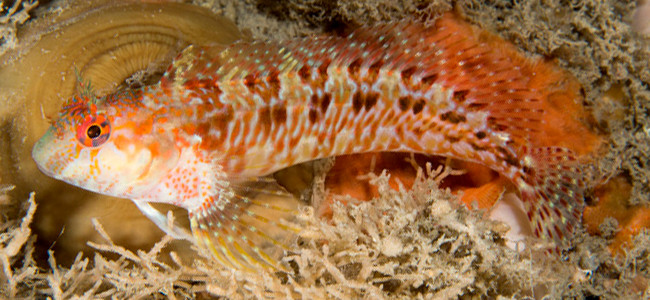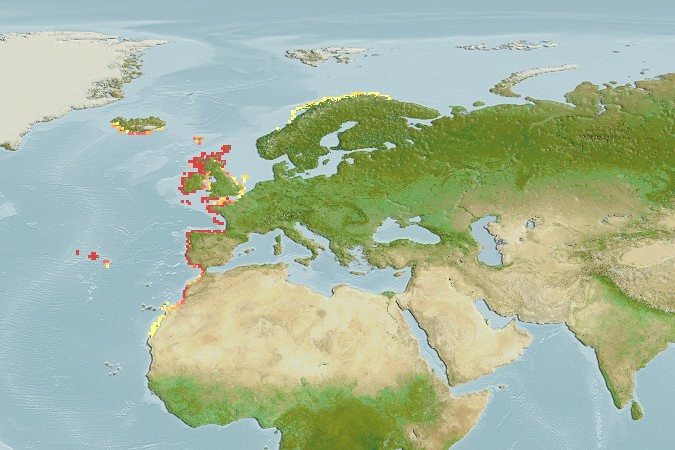Parablennius ruber is a fish from the family Blenniidae, commonly known as the ‘red blenny‘ due to its distinctive coloration. Its scientific name combines ‘Parablennius‘, referring to the blenny genus, and ‘ruber‘, Latin for ‘red‘, alluding to its characteristic color. This species is endemic to the northeastern Atlantic and mainly inhabits the rocky coasts of the Macaronesian islands (Azores, Madeira, Canary Islands) and the Iberian Peninsula. It prefers shallow waters, usually between 1 and 30 meters deep, although it can be found down to 50 meters, in areas abundant in rocks and algae where it can find shelter and food.
Parablennius ruber can reach lengths between 10 and 12 cm, although some individuals may grow up to 14 cm. It has an elongated and somewhat laterally compressed body, with a robust head and a small mouth located on the underside, a typical feature of blennies. Its coloration distinguishes it from other species in the genus: predominantly reddish, often with brown or gray spots that help it camouflage in its rocky environment. During the breeding season, males may exhibit even more intense and bright colors. A typical trait of the species is the presence of small cirri (filaments) above the eyes and on the edges of the nostrils, which are sensory structures that help it perceive its surroundings. Compared to similar species like Parablennius gattorugine, Parablennius ruber has a redder coloration and a smaller body length.
Regarding its diet, Parablennius ruber is omnivorous, feeding on a mix of small invertebrates and algae. It scrapes algae off rocks with its lips and small teeth but also hunts small crustaceans, worms, and molluscs found in the substrate. This feeding behavior allows it to adapt to variations in food availability in its environment, typical of blennies, which are generalist and opportunistic feeders.
Reproduction of Parablennius ruber mainly occurs during the warmer months, between spring and summer. The species is oviparous, and during the spawning season, males defend territories and nests located in cavities or crevices in the rocks. After mating, the female lays her eggs in these nests, where the male guards and ventilates them with his pectoral fins until they hatch. Males protect the nest from potential predators during this period, showing territorial and aggressive behavior.
An interesting feature of Parablennius ruber is its ability to change color depending on its emotional or environmental state, a common behavior among blennies that helps both communication with other members of the species and camouflage. This blenny has also shown high adaptability to variations in habitat conditions, such as changes in temperature or exposure to sunlight, allowing it to live in both very bright areas and more shaded zones.
Photos:


 from
from